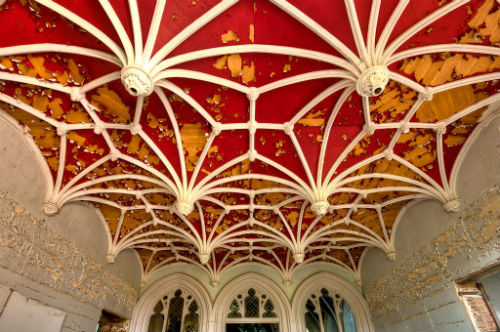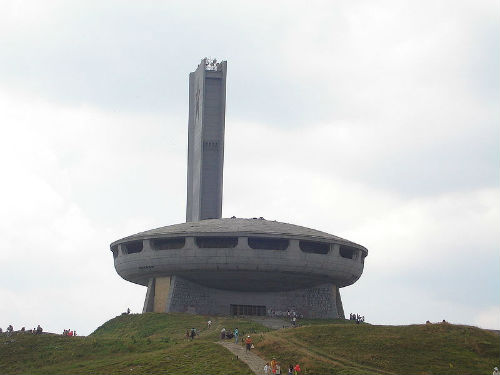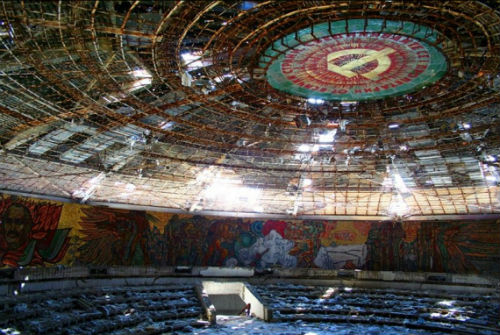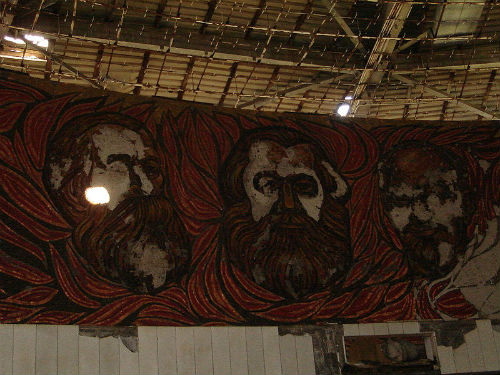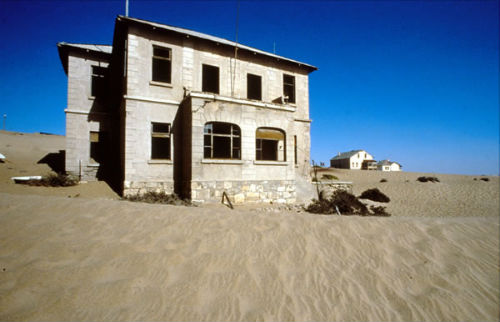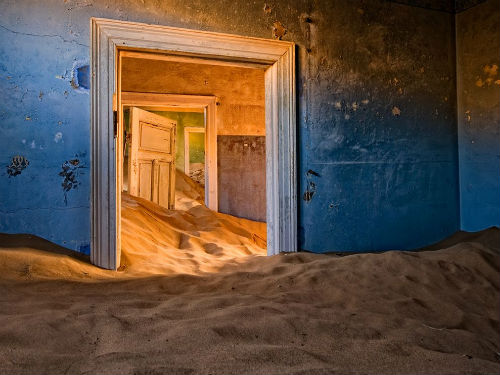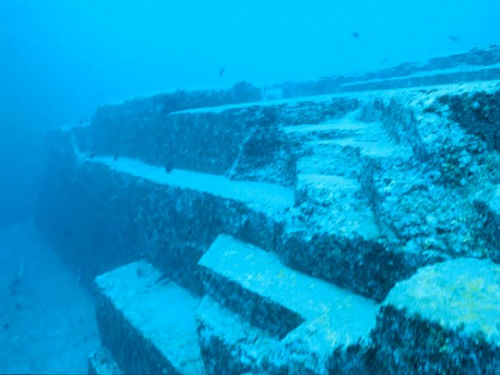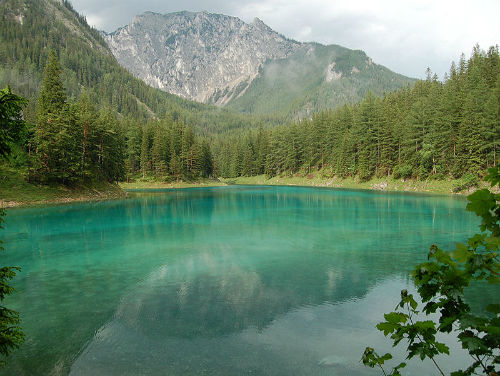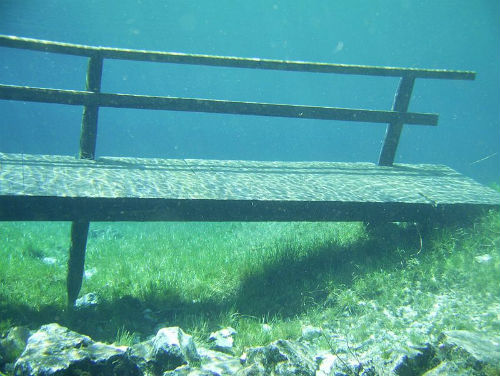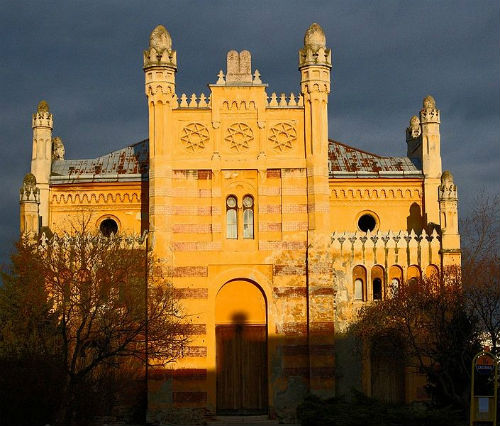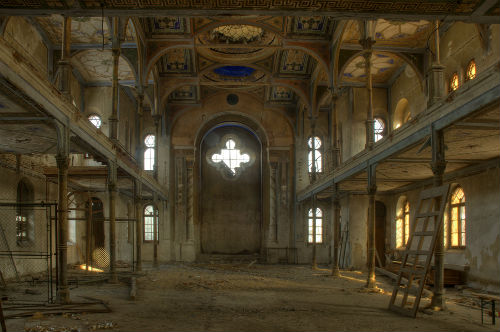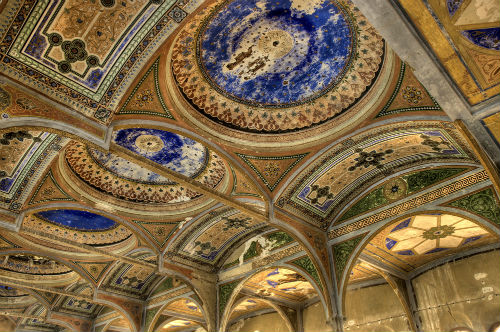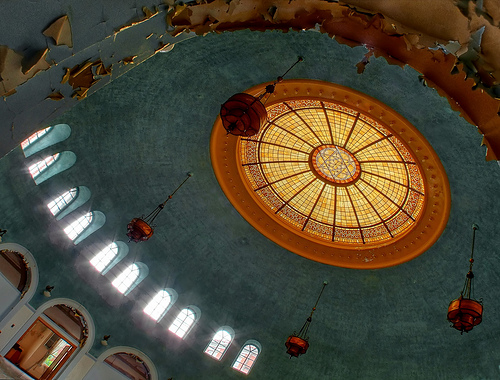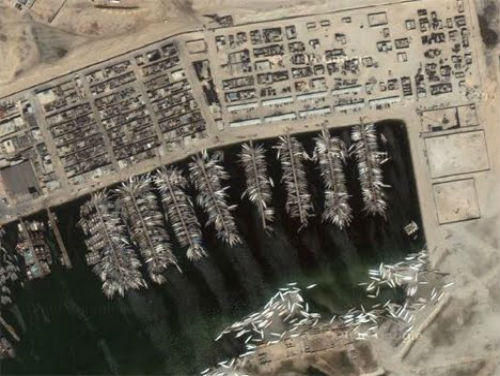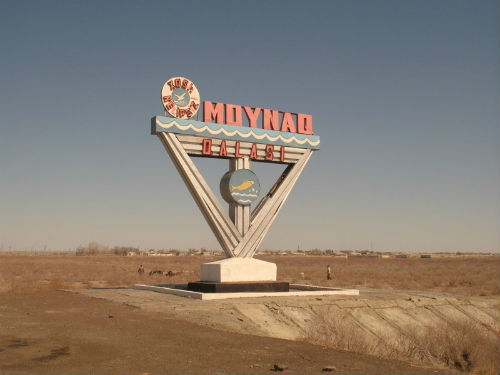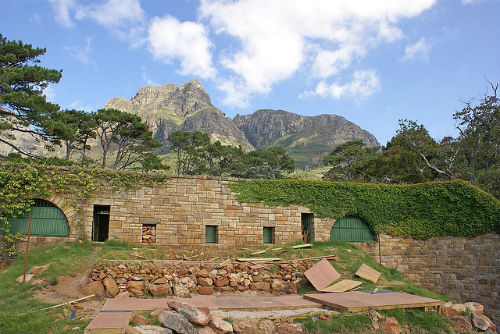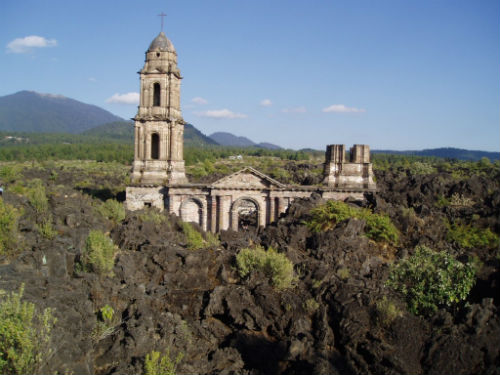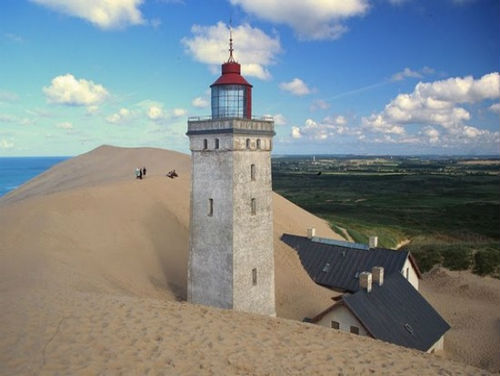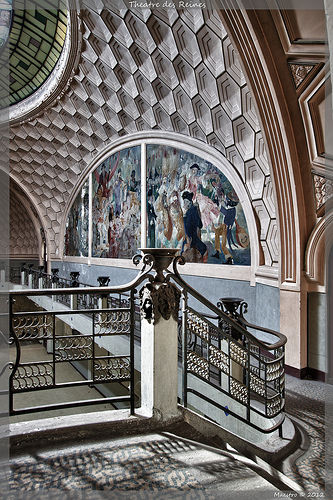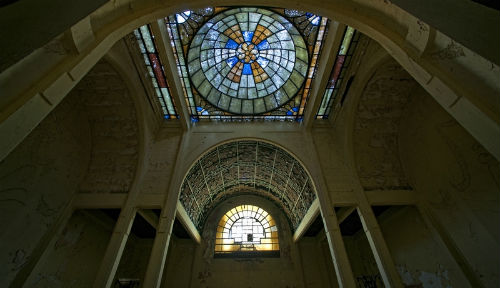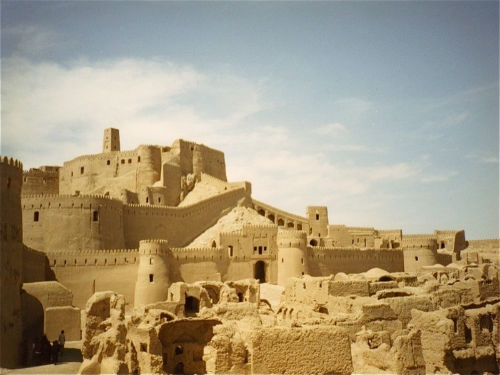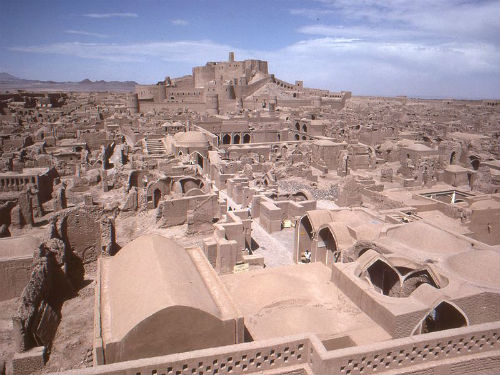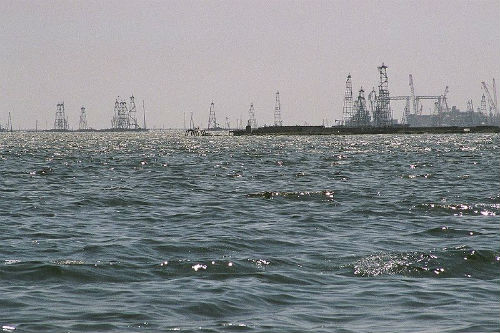For the past eight months, the Five Abandoned Places series has showcased a total of 175 locations from around the world. Today’s “top 20” post will mark the last of the weekly series (which no doubt will take on a new form in the weeks ahead). Many thanks to the readers who have offered site suggestions or left comments.
1. Château Noisy, Belgium
The Noisy Castle (also known as the Miranda Castle) is a 19th century castle built in 1866 by the Liedekerke-Beaufort family. Once used as their summer residence, the castle was taken over by the Nazis during World War II and was later converted into a home for children. Empty since 1991, the castle has fallen into disarray and additional images can be seen here.
2. The Buzludzha Monument, Bulgaria
Located on Buzludzha peak in Bulgaria, the Buzludzha monument was constructed in 1981 to commemorate the 100th anniversary of Dimitar Blagoev’s secret gathering to establish the country’s socialist movement in the area. The buildings arena was built for state functions and celebrations. Abandoned since 1989, archival images can be seen here.
3. Kolmanskop, Namibia
In 1908, the town of Kolmanskop in southern Namibia had become a profitable location for diamond miners. Beginning with the drop in diamond sales after World War I, the town was eventually abandoned by 1954. Since then, the buildings of Kolmanskop have been reclaimed by the sand dunes of the Namib desert.
4. Yonaguni Monument, Japan
While there is still ongoing debate as to whether the underwater rock formation off of Japan’s Ryukyu Islands is natural, modified or man-made (I’m going with a lost set from Costner’s Waterworld), the fact remains that a massively large geometric structure with a series of terraces and broad steps exist below sea level. Dating back to 2,000 to 3,000 years ago, the site was discovered in 1997 and serves as a popular attraction for divers.

5. Green Lake, Tragoess, Austria
Located at the foot of Hochschwab Mountains, Green Lake (or Der Grüne See) is completely dry during the winter months. Come May, the runoff of melting ice and snow from the mountains begin to transform this once country park into a crystal-clear lake with water levels reaching upwards of 11 meters.
6. Synagogue of Vrbové, Slovakia
The Synagogue of Vrbové was designed by architect Wilhelm Stiassny and constructed in a Moorish style with a tri-partite façade in 1883. Once the home of an active and flourishing Jewish population, the entire town of Vrbové was transformed into a ghetto during World War II and most of the region’s Jewish population (approximately 150,000) were deported to the death camp at Auschwitz. While the local municipality attempted a complete restoration in the late 1980s, the synagogue has remained vacant and dilapidated. For further information, see Dr. Maroš Borský monographic treatment of synagogue architecture titled “Synagogue Architecture in Slovakia Towards Creating a Memorial Landscape of Lost Community.”
7. JN Adam Sanatorium, Perrysburg, New York, United States
Designed in a neo-classical Southern plantation style by architect John Hopper Coxhead, the JN Adam Sanatorium, in Perrysburg, New York, was constructed between 1909 and 1912. Originally serving as a hospital for the treatment of tuberculosis patients, JN Adam was later converted into an educational facility for children with disabilities. Abandoned since 1995, the dining hall rotunda continues to house the stained-glass oculus taken from the Temple of Music at the 1901 Pan-American Exposition. The very dome structure that President William McKinley was assassinated under.
8. Ship Cemetery, Nouadhibou Bay, Mauritania
If you ever wondered where ships go to die, then look no further than Mauritania’s Bay of Nouadhibou. The stockpile of over 500 crumbling ships was decades in the making. Owing both to the city’s widespread poverty and ship owner’s hankering for alternative (read cheap) ways of off-loading obsolete fleet, Mauritanian habour officials were easily bribed with cash payments. In 2008, an EU-funded depollution effort began with the aim of removing 55 wrecks.
9. Pod City of San Zhi, Taiwan
Intended as a luxury vacation resort on the north coast of Taiwan, the San Zhi Pod City consisted of futuristic looking multi-coloured circular pods. Built in 1978, the resort was abandoned in 1980 before any of the structures were inhabited. Theories abound on the causes of its vacancy and range from the collapse of the real estate bubble, to poor insulation, to being haunted.
10. Moynaq, Uzbekistan
Uzbekistan’s only port city, Moynaq, was once the centre for fishing and canning. The city is now home to an ecological disaster due to the demise of the Aral Sea. Once the world’s fourth largest landlocked body of water, Aral sea is a shadow of its former self. In the 1960s, the Soviet Union diverted the two main rivers that fed the sea in order to transform the arid plains of Kazakhstan, Uzbekistan, and Turkmenistan into fields for cotton and other crops. With more than 90% of its water lost, the dried up sea is an environmental and health disaster due to both agricultural chemical runoff and salt polluted air destroying both the sea and killing residents of the towns in its vicinity. Brace yourselves for the pending water wars.

11. Rhodes Zoo, Groote Schuur Estate, Cape Town, South Africa
Diamonds are forever, zoos are not. The Rhodes Zoo was named for and designed by Cecil Rhodes, staunch supporter of British colonialism and founder of De Beers diamond company. Built in the 1890s and closed in the 1970s, the Rhodes Groote Schuur estate located nearby now serves as a museum.

12. San Juan Parangaricutiro, Mexico
All that remains of the village of San Juan Parangaricutiro is this church. The Volcán de Parícutin began to erupt on February 20, 1943, and in one year’s time consumed two villages in lava and ash.
13. Rubjerg-Knude Lighthouse, Jutland, Denmark
Construction on the Rubjerg-Knude lighthouse in Jutland, Denmark began in 1899 and was completed on December 27, 1900. Built 200 meters inland and 60 meters above sea level, the lighthouse and accompanying buildings were abandoned in 2002 when years of coastal erosion and high sand dunes swallowed up the base of the lighthouse.
14. High Royds Asylum, Menston, United Kingdom
The High Royds Psychiatric Hospital first opened its doors on October 8th, 1888. Designed by architect J. Vickers-Edwards, High Royds is one of the last surviving hospitals built using the broad-arrow echelon-plan (e.g. the arrangement of wards, services, and offices built within easy reach of each other via a network of interconnecting corridors). Before closing in 2003, the site operated like a small self-contained village and included a library, butchers, upholsterers, a ballroom, a dispensary, cobblers and a railway. A number of the buildings are slowly being converted into posh residences.
15. Cleopatra’s Palace, Alexandria, Egypt
In the words of Mary J. Blige: “So tired, tired of this drama, No more, no more, I wanna be free,” Cleopatra succumbed to a self-inflicted (or was it?) cobra bite in the year 30 BCE. Leaving behind both her palace and temple complex, the royal quarters were eventually submerged into the sea following cataclysmic earthquakes and tsunamis more than 1,600 years ago. Rediscovered in 1996, historians believe it is one of the richest underwater archaeological sites in the world.

16. Lighthouse, Great Isaac Cay, Bahamas
The 151 foot tall lighthouse on the Bahamian Island of Great Isaac Cay was erected in 1859. According to folklore, the site has a history of unexplained disappearances and ghosts sightings. In the late 19th century, an infant is said to have been the sole survivor of a shipwreck on the island. Locals claim that the infant’s mother, known as the Grey Lady, can still be heard wailing in sorrow during the full moon. On August 4th, 1969, the lighthouse keepers, Ivan Major and B. Mollings, mysteriously disappeared. Since the late 1970s, the compound’s buildings have been left to crumble while the lighthouse has been automated.
17. Théâtre des Reines, France
An architectural gem that is apparently hidden in plain sight, le Théâtre des Reines was formally a 17th century Jesuit college and chapel. Following WW1 where the building had sustained structural damage, the site was renovated into an Art Deco theatre and ballroom by the local municipality. The theatre was closed in 1967.
18. Bam, Iran
Located in the Kerman Province of Iran, the ancient fortified city of Bam (or Arg-e-Bam) dates back to the Parthian Empire, some 2,000 years ago. Molded out of the red clay of the Dasht-e Kavir desert, the city was permanently abandoned in 1932. Due to a devastating 6.5 Richter scale earthquake in 2003 (where more than 26,000 people lost their lives in adjacent cities), 60 percent of the buildings in Bam were destroyed while the ancient citadel was severely damaged.
19. Nova Cidade de Kilamba, Angola
Located some 30km outside of Angola’s capital city of Luanda, Nova Cidade de Kilamba is a housing development built over the last several years by the China International Trust and Investment Corporation. With 750 eight-storey apartment blocks, a dozen schools and over 100 retail stores, the city was designed to house upwards of 500,000 people. Yet with apartments priced at £75,000, many of the city’s residents cannot afford to move in and the site has remained virtually empty since July 2012.
20. Neft Daslari (Oil City), Caspian Sea
I’ve seen the future and it’s not pretty. Azerbaijan’s Neft Daslari (aka Oil Rocks) was a Stalinist mega-project to provide the Soviet Union with oil following WW2. Approximately 45km offshore of the Caspian Sea, the floating city was built in several phases starting in 1951. The network of 2,000 interconnected platforms and 200km of roads (built on 17,650,000 cu ft of landfill) were created to support the 600 separate wells operating on Neft Daslari. With a workforce of over 5,000, oil extraction continued well into the 1970s. Today, two-thirds of the infrastructure is under water.
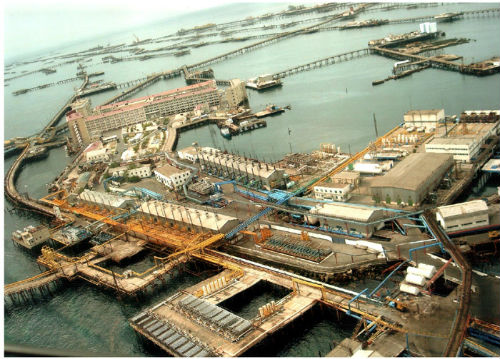
For previous entries, please click here.
(Images c/o 1, 2, 3, 4, 5, 6, 7, 8, 9, 10, 11, 12, 13, 14, 15,16, 17, 18, 19, 20, 21, 22, 23, 24, 25, 26, 27, 28, 29, 30, 31, 32, 33, 34, 35, 36, 37, 38, 39, 40, 41, 42, 43, 44, 45)


